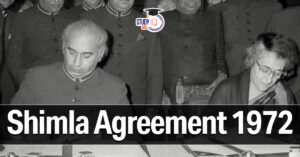Table of Contents
C.R. Formula
To resolve the political impasse between the Indian National Congress and the All India Muslim League, C. Rajagopalachari, an INC member, suggested the Rajagopalachari Formula, also known as the Rajaji Formula. Rajaji or C.R., or Chakravarti Rajagopalachari, was an Indian statesman, author, lawyer, and independence fighter. Before India became a republic in 1950, he held the position of the country’s final governor general. In this piece, we’ll talk about the Rajagopalachari Formula’s benefits for preparing for the UPSC Exam.
C.R. Formula History
The C.R. Formula was an effort to create a political front that included both Muslims and Hindus to defend India’s independence from British control. On a few crucial issues, an understanding was reached between the Muslim League and the Indian National Congress, which ultimately led to acceptance by both parties. The formula was created in 1938 and called after its creator, C Rajagopalachari, who was the Premier of the Madras Presidency at the time.
According to the Rajaji formula, it was decided that the British government would conduct a referendum to determine the definition of India. This vote determined whether India would become independent as a dominion or maintain its present position as a colony. It also stipulated that Hindus and Muslims alone should receive India’s independence, in the event that it was to be awarded without any form of dominion status.
Indian National Congress agreed to specific demands made by the Muslim league on the basis of religion, such as a distinct electorate for minorities and the reservation of seats for Muslims in legislatures, in order to avoid being branded as communal.
C.R. Formula Proposal
The INC and the Muslim League would band together to seek British independence. At the centre, both parties would collaborate to build a transitional administration. Following the conflict, a committee would be tasked with identifying the areas where Muslims made up the majority of the population. In those areas, a referendum would be held asking residents (both Muslims and non-Muslims) whether they wanted to establish a separate, independent country with adult suffrage.
Mutual agreements for the protection of trade, communications, and defence will be made in the case of a partition. The aforementioned conditions won’t be implemented until after Britain cedes total authority to India.
C.R. Formula Significance
The Rajaji Formula was important because it made it possible for Muslims and Hindus to unite in opposition to British authority. The Indian National Congress and the Muslim League were unable to agree on any topic, which led to the creation of the formula. According to this formula, the British government would hold a referendum to determine whether or not to grant India independence.
Given that India did not gain freedom until 1947, this is one reason why many people have viewed it as a major failure. It has been claimed that if the Indian National Congress and Muslim League had adopted this formula much earlier than 1938, India would have attained independence much sooner. In addition, despite the Rajaji formula, no one could agree on the terms of independence, so it was agreed that India would continue to be ruled by the British.
It is clear from the discussion above that the Rajaji Formula had a major impact on India’s political landscape, whether or not it attained independence. Even 62 years after India’s freedom, Hindu-Muslim politics continue to be a contentious issue.
On the one hand, this equation served as a type of catalyst for the Muslim League and National Congress to form a coalition. However, this formula has come under fire because India was not immediately granted independence as a consequence of it. This formula’s failure to predict what would happen if India was denied freedom following such a referendum is one of the causes of its failure.
C.R. Formula Cause of Failure
The central goal of the formulas and proposals was to establish Pakistan as a separate country, but the majority of the people were to be non-Muslim. Jinnah thought that if the vote was cast, he might run the danger of dividing Bengal and Punjab. The plebiscite was to be taken into account by the entire population, which might have led to a dispute over the nation’s partition. Jinnah objected, saying that the plebiscite should only be taken into account by the Muslim community.
Jinnah asserted that while he desired complete partition, the formulas were mostly concerned with the services. The plans called for dividing Punjab, which ultimately meant that the Sikh population there would be split up and that Sikhs would not constitute the majority in any of the districts.
Because India did not gain freedom until 1947, the Rajaji Formula has drawn criticism. It has been claimed that if the Indian National Congress and Muslim League had adopted this formula much earlier than 1938, India would have attained independence much sooner. In addition, despite the Rajaji formula, no one could agree on the terms of independence, so it was agreed that India would continue to be ruled by the British.
C.R. Formula UPSC
The Rajaji Formula’s most crucial stipulation was that India would gain freedom only in exchange for dominion status. A referendum should be held to determine whether India should be autonomous under control or as a colony if it was not designated as a dominion. It also stipulated that if India were to receive independence without any form of dominance, it would only be provided to Hindus and Muslims collectively. To prepare for the UPSC Exam, read this article for all the Rajaji Formula information.


 Shimla Agreement 1972 to 2025: From Peac...
Shimla Agreement 1972 to 2025: From Peac...
 Indus River System, Tributaries, and Sin...
Indus River System, Tributaries, and Sin...
 Jallianwala Bagh Massacre, Date, History...
Jallianwala Bagh Massacre, Date, History...





















